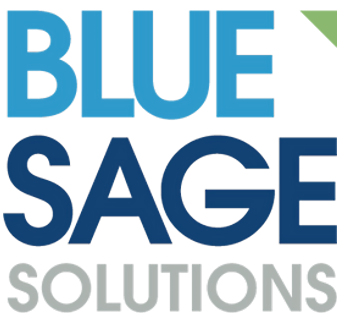Articles

Blue Sage Solutions’ Joey McDuffee: For Mortgage Tech, The Future is Already Here
MBA NewsLink
July 14, 2023

Joey McDuffee
Joey McDuffee is Vice President of Sales and Marketing with Blue Sage Solutions, Englewood Cliffs, N.J. He has 25 years of experience in development, support and sales of mortgage origination technologies. He has worked with a variety of the largest banks and mortgage companies across the country, including Wells Fargo, Citicorp and JP Morgan Chase, designing and implementing mortgage origination technology solutions and assisting with transformational process re-engineering. Prior to leading sales at Blue Sage Solutions, Joey worked in the U.S. and abroad as head of sales at Wipro Gallagher Solutions.
Famed science fiction author William Gibson is known for saying, “The future is already here — it’s just not very evenly distributed.” Gibson obviously wasn’t talking about the mortgage industry, but he easily could have been.
That’s because new technologies and uses of data are transforming the way lenders manufacture loans—but among the thousands of industry participants, not everyone is on the same page.
In 2021, global consulting firm McKinsey & Co. identified five trends that were transforming the mortgage industry, and one of them was that third-party technology and data providers are streamlining more parts of the mortgage process. While this trend has continued in the two years since, progress has been slower than expected. And yet, a growing number of forward-thinking lenders that embraced these tools could provide the momentum the industry needs to achieve its long-awaited transformation.
Still Obstacles to Overcome
Perhaps the biggest and most obvious obstacle preventing the future from being evenly distributed is that the mortgage origination process involves thousands of participants, from brokers and loan officers to lenders, title and escrow companies, appraisers, Realtors, mortgage insurers, servicers, investors, and federal and state regulators. As a result, any innovation that seeks to streamline one or more components of the mortgage process needs to take into account the impact on all participants, which requires significant planning, coordination, and time.
An equally problematic obstacle is the fact that many (if not most) mortgage technologies in use today are built on outdated, disparate systems that have been pieced together over time. As a result, a solution that would seem simple to industry outsiders—like replacing a legacy loan origination system with a modern, cloud-built platform—can feel quite daunting because everything is interconnected. How all these pieces fit together is not usually well documented, either. Instead, it’s typically stored in the heads of a select few IT professionals who are busy keeping the existing systems operational.
Despite the growing impact third-party technology and data providers are having on the industry, progress has been sporadic. For good or bad, loan origination volume often dictates the pace of innovation. When rates are down and volumes are up, many originators are too busy to take on much change; they just want to close as many deals as possible while the good times last. Conversely, when volume is low, originators go into belt-tightening mode, and are hesitant to invest in technology because of market uncertainty.
Recently, however, third-party technology providers have been addressing some of these obstacles by creating comprehensive, digital mortgage platforms with open APIs, which enable lenders to adopt automation and make loan manufacturing more efficient. These platforms not only integrate with other systems and data sources more easily than legacy technologies, but they also make it easier for mortgage participants to manage and share information.
Industry Innovation Hasn’t Slowed
In recent years, new, flexible, cloud-based digital mortgage platforms have been growing in popularity for this very reason. Because they were built in the cloud with modern technology (not technology created decades ago), these platforms enable lenders to offer a more personalized and streamlined experience to borrowers. In fact, they even let borrowers complete the entire mortgage application process online, from pre-qualification to closing, without necessarily having to talk to a loan officer.
New, digital mortgage platforms typically offer a user-friendly interface, real-time communication, and 24/7 access to information and support. Moreover, they leverage data and analytics to personalize the borrower’s experience, offering customized loan options based on financial profiles and preferences. They also provide real-time updates on the status of the application and closing process, reducing the need for manual follow-up and improving transparency.
Of course, it takes a significant amount of data to manufacture loans, which is why data providers play a crucial role in streamlining the mortgage process. Just like newer third-party technology providers are building better tools to originate loans, our industry has also seen the introduction of new data and analytics that enable lenders to make better-informed decisions.
For example, third-party data and service providers are getting better at automating the verification of a borrower’s identity and income as well as providing this data through seamless integrations with a lender’s origination platform. This saves lenders countless hours normally spent by loan processors pouring through multiple documents, handling bank statements and pay stubs, and then manually keying data into their LOS, potentially adding errors on an application.
Clearing the Path
As the benefits of technology become more apparent and success stories emerge, more lenders will be receptive toward technology that significantly streamlines their operations. Those stories are happening now, and lenders that have made the proper investments in technology are not nearly as prone to the merry-go-round of hiring and firing people with every swing in the market.
One process that’s critical to maximizing the benefits of third-party technology and data providers is for lenders to make sure all their partners are on board once they decide to adopt and implement new technologies and services. For example, brokers and loan officers need to understand how a new digital mortgage platform will impact their roles and, ideally, increase their sales production. Investors need to know the loan files they receive are packaged correctly and are of high quality. And borrowers need to know that while they can drive their own mortgage process, their loan officer is always standing by to help and will always know exactly where the borrower is in that process at all times.
Another key to optimizing these new resources is collaboration. Mortgage lenders and third-party vendors and data providers need to work closely together to integrate systems, standardize data, and automate processes. This collaboration requires trust, transparency, and a willingness to adapt and change.
However, by choosing a digital mortgage platform that is built in the cloud using an open-API architecture, achieving this type of collaboration is relatively simple. In fact, there are comprehensive, cloud-based platforms available that are capable of streamlining every aspect of the origination process, from application to closing. They’re also flexible enough to handle any or all of a lender’s channels of business, whether it’s retail, wholesale, or correspondent lending.
The fact that mortgage technology is not yet evenly distributed is a great reason for banks, lenders, and credit unions to embrace modern technology right now. Doing so will not just save them money in the short term, it will help them maximize market opportunities that still exist in today’s slower market, such as home equity lending and new construction loans. And when the market improves, they’ll be years ahead of their competition.
The bottom line is that the industry transformation McKinsey detailed can be realized today. Lenders just need the right partners to overcome the hurdles that exist. Those that do will have a significant competitive advantage long into the future.
(Views expressed in this article do not necessarily reflect policy of the Mortgage Bankers Association, nor do they connote an MBA endorsement of a specific company, product or service. MBA NewsLink welcomes your submissions. Inquiries can be sent to NewsLink Editor Michael Tucker at or Editorial Manager Anneliese Mahoney at .

